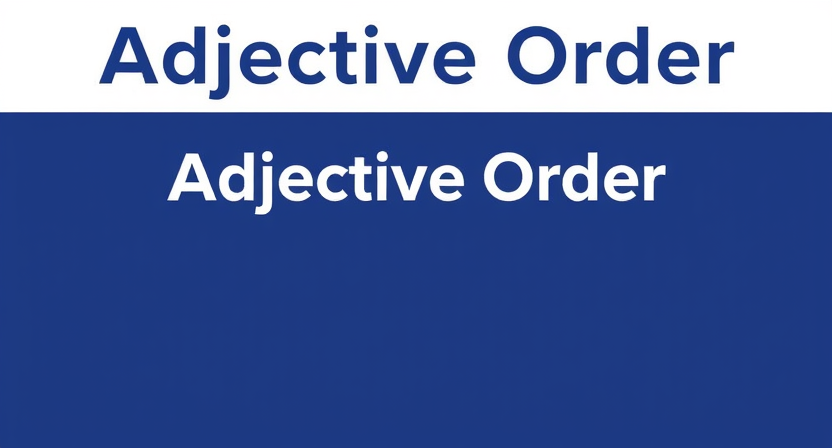A lovely blue Italian scarf or an Italian blue lovely scarf? Adjective order.
There are many language rules that native speakers of English know without knowing they know it and today we’re going to talk about one of them. If you decide to learn English in London, you will most certainly have a lesson on the topic of adjective order. This is a rule that is not very common in other languages, but you have to get it right in English, or you risk sounding a bit strange when giving multiple qualities to a noun. It is innate to native speakers but students who learn English in London or elsewhere have to painfully learn and memorise it.
If you’re talking about Mars with a native speaker and suddenly say something about the ‘green little men’ that live there, they may give you a puzzled look. Why? Because it sounds weird! What you should say is ‘little green men’ Again, why? Because when describing a noun with multiple adjectives there is an order to follow and if you mess it up in any way it will sound, so, so wrong.
A few years ago, the BBC Culture editor Matthew Anderson tweeted a paragraph from a book called The Elements of Eloquence by Mark Forsyth’s and it went viral on Social Media. Here it is:
For native speakers this sounded very exciting indeed and they were talking about it for weeks! They all know that there are language rules they can’t explain but just sound right, but this one in particular that doesn’t involve tenses or time never occurred to many. This rule is something the majority of students who decide to learn English in London come across and have to learn, so no surprises for them. However, suddenly a lot of people could understand and were discussing why that film absolutely cannot be called My Greek Big Fat Wedding (doesn’t that sound weird?) but it must be My Big Fat Greek Wedding.
For students who learn English it is quite a tricky one to perfect and many only really master it years into their English language journey. Now imagine how difficult it would be if you wished to use 8 adjectives to describe one jacket: “Hey Mary, did you borrow my scruffy big old round blue American leather waterproof jacket by any chance? If you want to use all these adjectives to describe the jacket it absolutely has to follow this order: opinion, size, age, shape, colour, origin, material and purpose. Isn’t it fascinating that native speakers develop this complicated structural rule innately? And that they can use 8 adjectives to describe one noun without blinking or breaking a sweat? Quite daunting for non-native speakers who will only hear about it in the classroom once they decide to learn English.
Now, as it is common in the English language, there are exceptions to the rule. You may notice that Little Red Riding Hood perfectly obeys the adjective order rule, but the Big Bad Wolf is not in the correct order. Why? Well, in fact, the Big Bad Wolf is just obeying another great linguistic law that, again, every native English speaker knows, but doesn’t know that they know. And it’s the same reason why you’ve never listened to hop-hip music, walked in zag-zig, or heard your clock going tock-tick. But I guess we will leave this one for another blog…
Interested in all the weird and wonderful curiosities of our English language? Then why not come and learn English in London, an amazing huge ancient green English city we all love!

